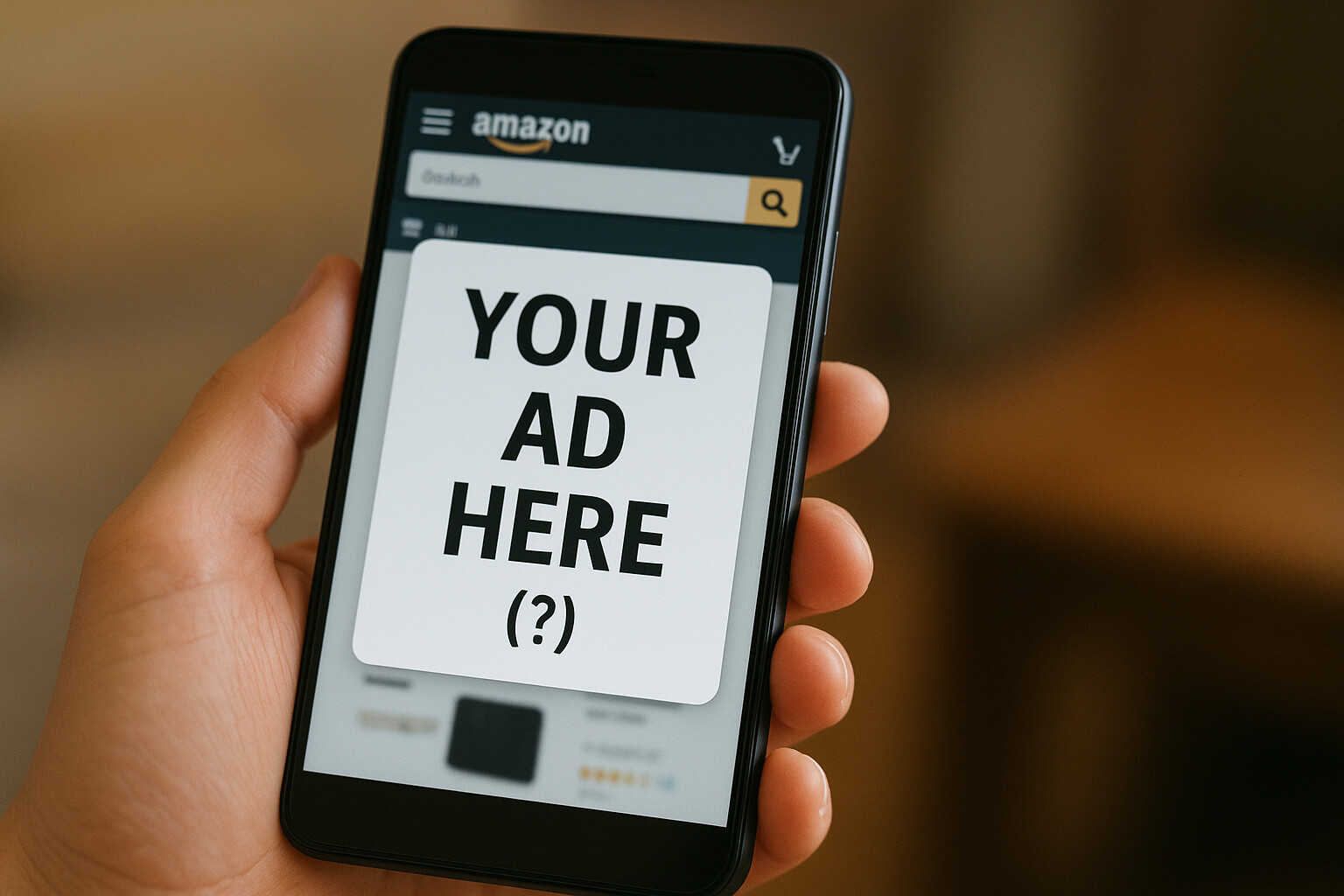Amazon Price Optimization – How to Excel as a Seller

Selling on Amazon is extremely competitive — not just between different products, but also between multiple sellers of the same item. Often, the price you set determines whether you’ll win the sale, making a strong Amazon pricing strategy essential. This is why, on Amazon, price optimization is crucial.
Combat the Competition with Price Optimization
Competition Across Products
No matter your niche — from gaming gear to garden furniture — you’ll rarely be the only supplier. Amazon compares products on every search results page using an algorithm that predicts the likelihood of purchase. Price plays a key role here, though the cheapest product doesn’t always win; it’s the listing that best matches the search query and offers an attractive price.
Competition in the Buy Box
Even if you’re added to an existing product listing, you still compete for the Buy Box — the prominent “Add to Cart” button that determines which seller the customer sees first. Optimizing your price is crucial to winning this spot and boosting sales.

In almost all cases, the button contains the offer of one single seller. All other sellers who offer the same product are summarized in a second list which is easily overlooked by buyers.

So it is not surprising that the Buy Box is considered somewhat of a holy grail of Amazon. After all, 90% of all sales take place in the Buy Box.
TL;DR: Amazon Price Optimization – Key Takeaways
Win the Buy Box With the Right (Amazon Pricing) Strategy
While pricing is immensely important, it’s by far not the only relevant metric. In order to win the Buy Box, you have to meet the selection criteria that Amazon uses to choose which products land behind it, and then implement these criteria better than your competitors.
Following criteria are crucial for winning the Buy Box:

Overall, these metrics are the minimum requirements if your plan is to boost your product visibility. If they are not met, there is no chance of you winning the Buy Box from the outset.
Six Strategies That Cut It
All the pricing strategies below can be tested and applied for free with SELLERLOGIC. Even without automation, these methods are crucial Amazon price optimization strategies for sellers of every level. While an Amazon pricing engine certainly saves time by executing them automatically, you can still implement each one manually with a bit of structure, tracking, and regular adjustments.
1. Buy Box Strategy (Wholesale)
Winning and holding the Buy Box requires you to monitor competitor prices closely and also that you adjust yours to stay competitive without harming your margins. If you make changes, make those changes step-by-step and incrementally — sometimes lowering a price by just €0.10 can make the difference between visibility and obscurity.
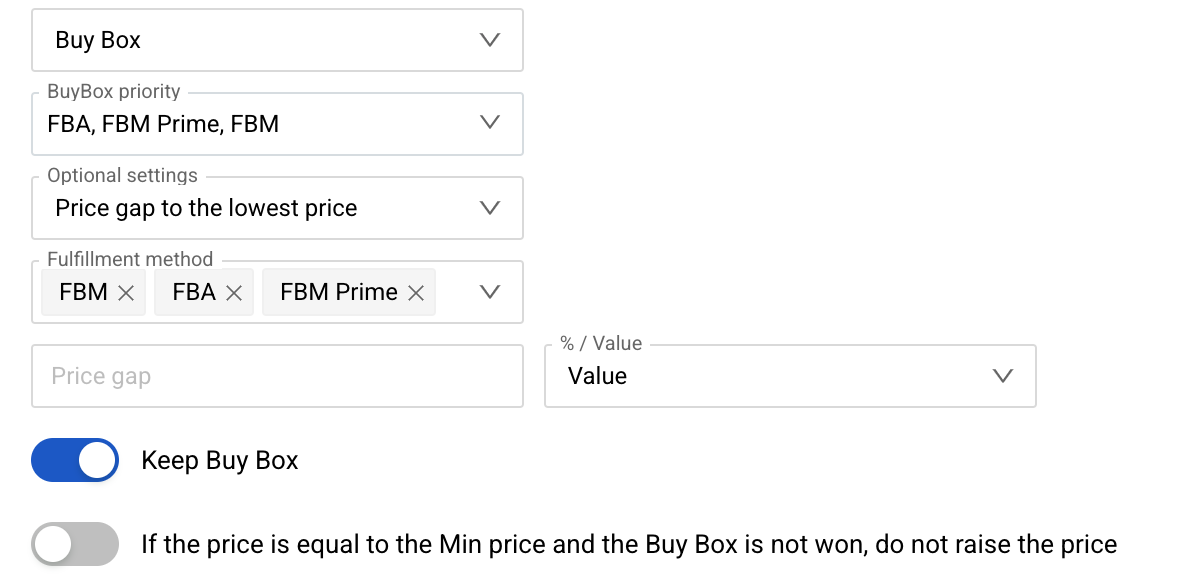
2. Manual Strategy (Wholesale & Private Label)
Set your own pricing rules and boundaries. Define minimum and maximum prices, adjust for product launches or seasonal promotions, and test how these changes change your visibility and conversion.
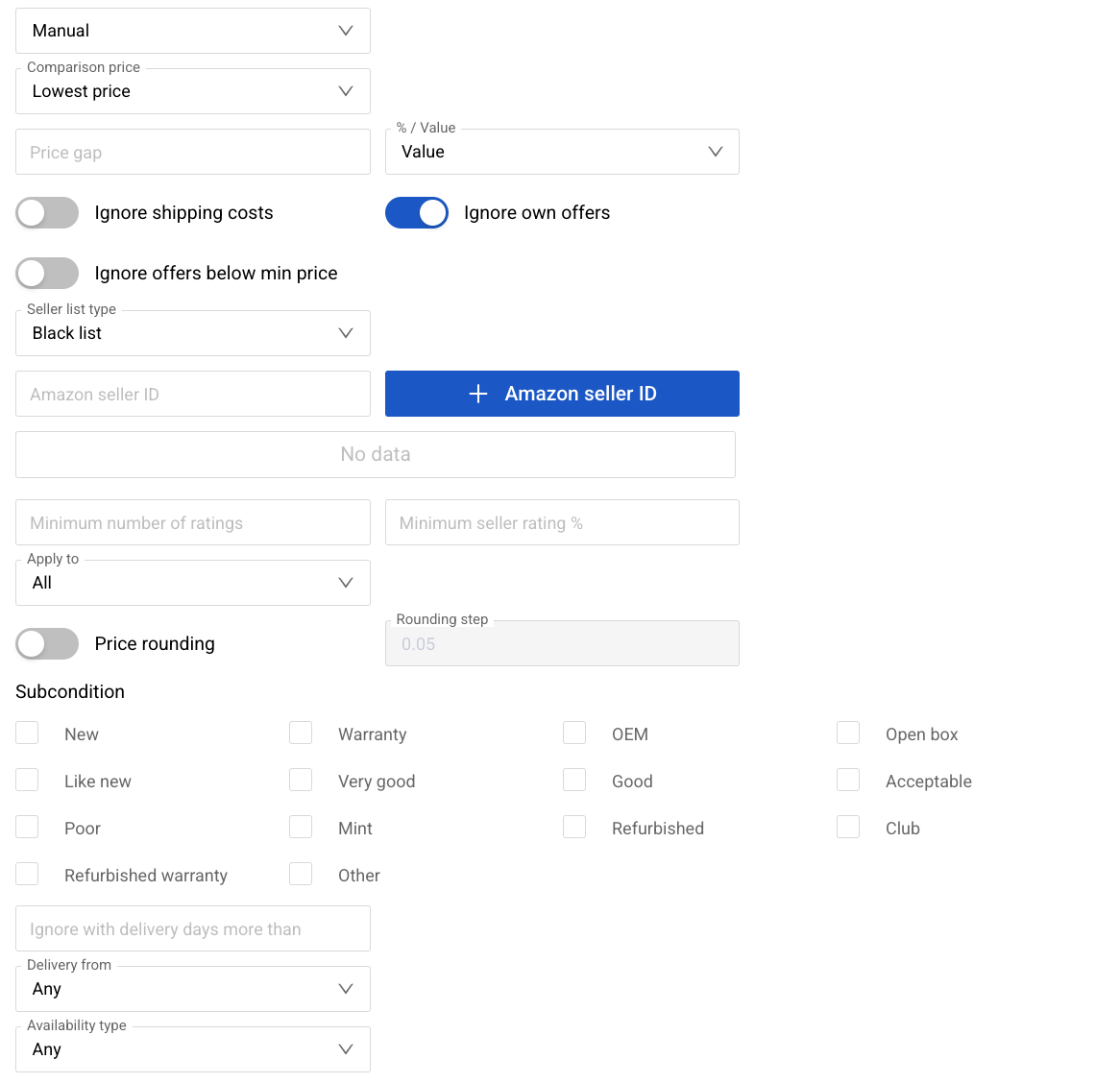
3. Push Strategy (Wholesale & Private Label)
Base price changes on performance data. When sales go up, gradually increase prices to gain more profit. If demand goes down, lower prices slightly to boost your conversions. Regularly track your sales data regularly to identify the most profitable price points.
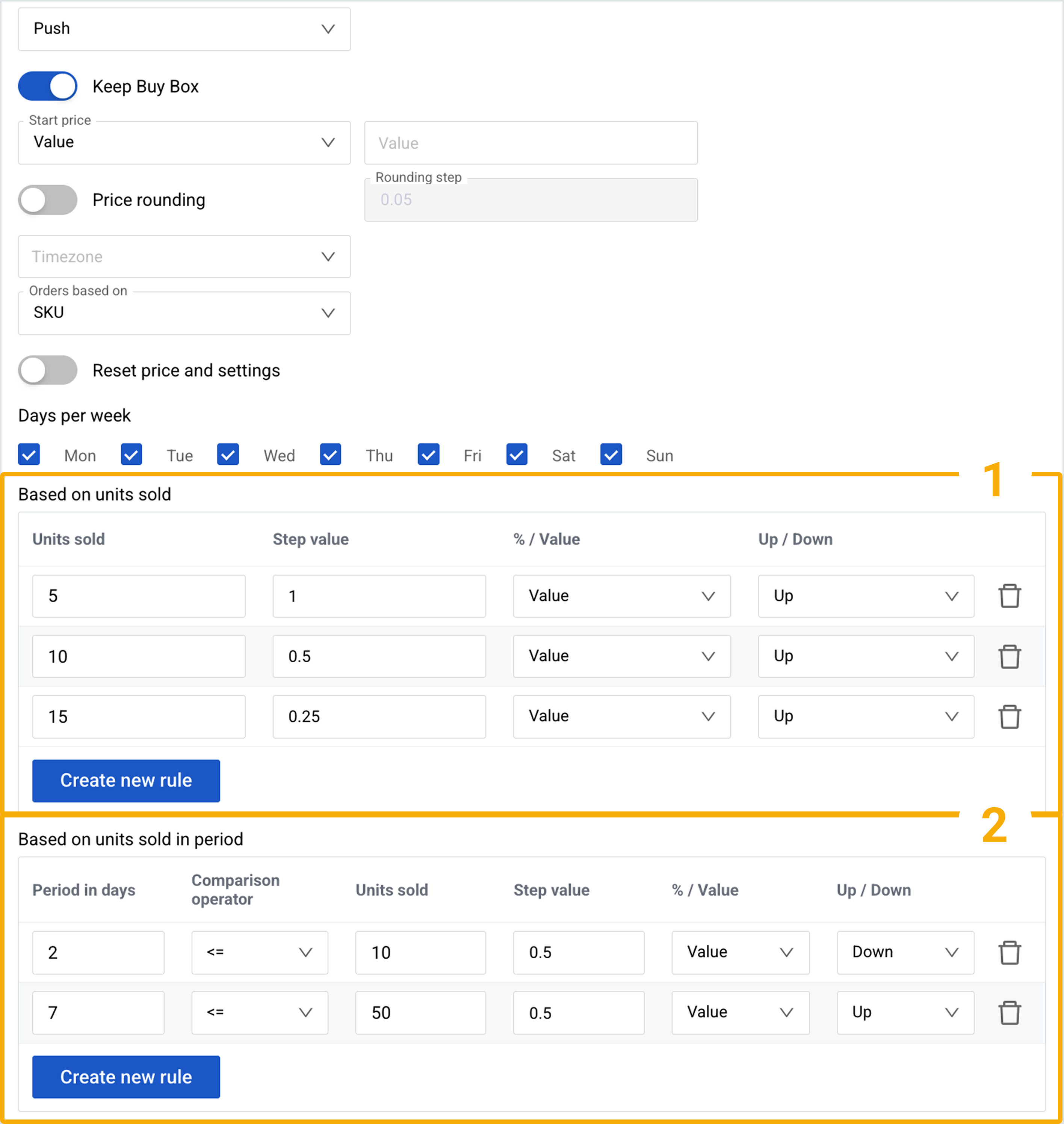
4. Daily Push Strategy (Wholesale & Private Label)
Adapt your prices to the behavior of your buyers. When sellers are actively buying, set the prices higher. Set the prices back to the original base price during times when they are not buying (working hours or at night) to retain product visibility.
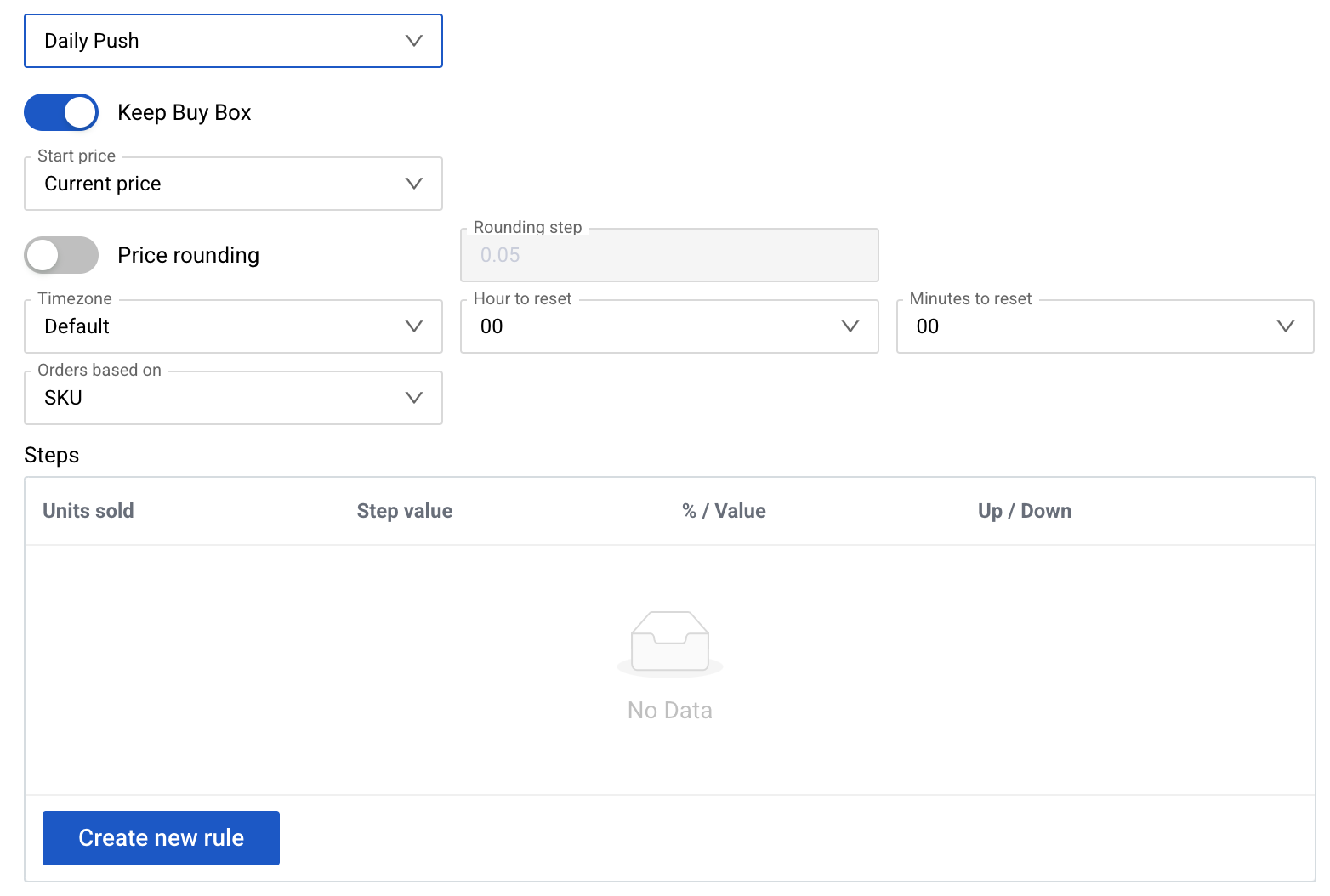
5. Elastic Pricing: Smarter Prices, Higher Profits
Apply elasticity-based thinking to your pricing. Check your last three sales within the past 10 days and analyze how any price changes you undertook affected sales volume and margins. Use this insight to find the next price point.

6. Cross-Product (Cross-ASIN) Strategy
If you’re selling in competitive niches, identify up to 20 comparable ASINs and track their pricing trends. Find the ideal price gap (for example, staying 3–5% below the average). By reviewing and adjusting prices manually every few days, you can keep your offer attractive while also remaining profitable.
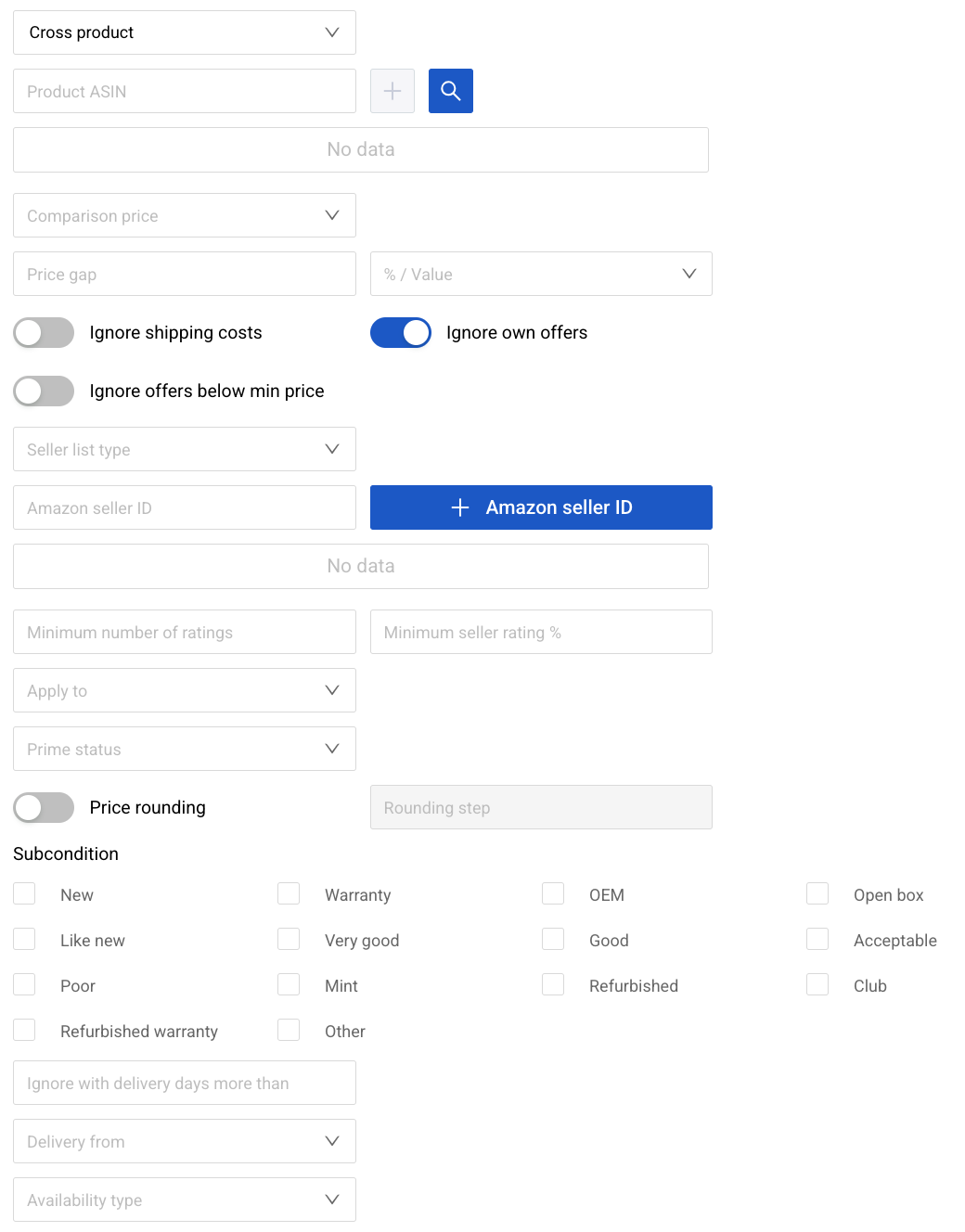
💡 Pro Tip: Manual optimization works best when paired with structured tracking. Use spreadsheets or Amazon’s Business Reports to record your price changes and results. If you’re a SELLERLOGIC Repricer user, this becomes even easier — you automatically get free access to SELLERLOGIC Business Analytics, which lets you monitor your key metrics in detail and quickly see which products are performing well and which need attention.
No seller wants to sell at a loss, see a decrease in product visibility or see their seller rating drop. So, how do you avoid this? On Amazon, a simple low-price strategy won’t cut it — but ignoring prices altogether is just as risky. You can count on it that your competitors are constantly adjusting their prices. Sellers that don’t optimize quickly lose the Buy Box.
How Different Pricing Models Impact Your Sales
Amazon as a platform offers you a variety of pricing approaches. We’ve listed the most effective models for your convenience, each with a distinct strategy and benefit — we’ve also added concrete examples showing how they work in practice.
Amazon Price Optimization – Your Immediate Benefits
Time Saving
Manually checking and adjusting every price? Not recommendable and also near impossible once your catalog grows. Automate your pricing and reclaim hours of work for what really matters — sourcing products, driving sales and marketing.
Higher Turnover
No Buy Box means no sales — it’s as simple as that. Smart Amazon price optimization increases your Buy Box share, which in turn leads to more products sold, and grows your overall revenue — even if your margins per item are smaller.
Even if the repricer reduces the percentage margin, it ensures higher sales and thus a higher contribution margin.
Profitability
Winning the Buy Box and keeping it is the first crucial step to success. In a second step, one has to secure the highest possible price for each sale, which high-end repricers like the SELLERLOGIC Repricer do automatically. The result? Higher contribution margins and healthier profit growth.
Pricing Accuracy
Never sell below cost again. By factoring in purchase price, Amazon fees, shipping, and VAT, SELLERLOGIC automatically calculates your minimum profitable price. An optimal Amazon tool.
Strategies
Amazon price optimization isn’t just about winning the Buy Box — it’s about long-term success. Well-defined Amazon seller pricing strategies that react to market and consumer behavior help you attract more buyers, increase sales volume, and maximize profitability.
Wrapping Up
Selling on Amazon comes with huge advantages — most notably, access to millions of potential customers on a single platform. But there’s a catch: As a fast-moving marketplace, Amazon requires your dynamic pricing strategies to be on point. Make sure they are.
While manual adjustments work for a small catalog, the process quickly becomes time-consuming and unsustainable as your portfolio grows. That’s when it’s time to scale smartly — by automating your pricing with the SellerLogic Repricer for consistent competitiveness and sustainable growth.
FAQs
Yes, Amazon uses dynamic pricing, meaning product prices change constantly — sometimes several times a day. These adjustments are driven by algorithms that analyze demand, competition, and sales performance. The goal is to stay competitive and maximize profit, making dynamic pricing essential for any seller aiming to succeed on Amazon.
Amazon’s low-cost strategy focuses on offering a vast selection of products at competitive prices. By optimizing their supply chain and leveraging economies of scale, Amazon can keep prices low, which attracts a broad base of customers. Sellers can benefit from this strategy by using tools to optimize their pricing and remain competitive in the marketplace.
Amazon’s pricing algorithm is designed to automatically adjust prices based on various factors, including competitor prices, demand, and inventory levels. The goal is to ensure that Amazon’s prices remain competitive while maximizing sales and profitability. Sellers can use similar algorithm-driven repricing tools to stay in sync with these market dynamics.
Yes, Amazon does use dynamic pricing. This means that prices can change frequently based on current market conditions, such as competitor pricing, customer demand, and stock availability. Dynamic pricing helps Amazon remain competitive and responsive to market trends, ultimately providing the best deals for customers.
Amazon’s competitive price strategy involves continuously monitoring and adjusting prices to remain competitive in the market. This strategy relies heavily on sophisticated algorithms and real-time data to ensure that prices are attractive to customers while still being profitable for sellers. Leveraging tools that align with Amazon’s competitive pricing strategy can help sellers increase their chances of winning the Buy Box and boosting sales.
Image credits in order of appearance: © ra2studio – de.depositphotos.com / Screenshot @ Amazon




